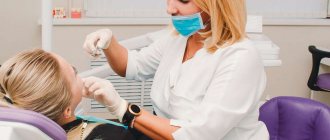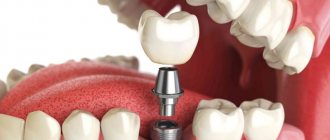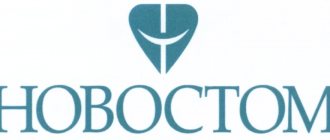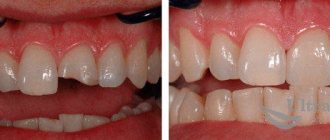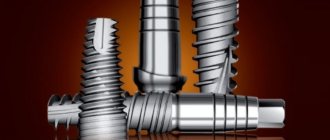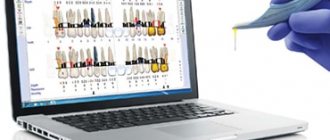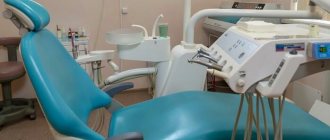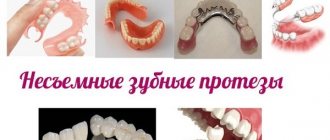The end of the year is a kind of time to take stock. We also decided to follow this tradition, but for the benefit of you, dear readers. All this year, the editors of Dental Magazine closely monitored the market, asked dentists for their opinions, and selected about 30 of the most popular and high-quality dental units that are worth their money and do not let the dentist down. Why installations? Yes, because you can’t go anywhere without it. A clinic can survive without x-rays, but not without an installation. Without a 3D scanner, a doctor can provide assistance, but without installation? Exactly. For a doctor, this is a primary tool, and there is no need to compare it with cars and other things. There is always a demand for equipment, because new clinics open, old devices break down, and a specialist spends a lot of time trying to find something that will help him provide quality care in the coming years. Therefore, Dental Magazine got down to business.
Before we started working on the article, we thought about the format. Agree, it is simply impossible to compare an installation that costs 200,000 and a “top-end” one that costs several million. They have different functionality, and their future owners have different budgets.
Therefore, it was decided to split the review into 3 parts:
- up to 500,000 rubles;
- up to 1,000,000 rubles;
- over 1,000,000 rubles.
The result was a very detailed market study for specialists with different purchasing powers. We decided to start in ascending order, and therefore in this article we will look at budget models. And honestly, some of them are able to give a head start to their more expensive “brothers”. These are high-quality models with five instruments, a comfortable patient chair, good electronics, a convenient hydraulic unit and a long service life.
Dentistry BC
Vedic texts, one of the oldest handwritten monuments in history, teach: “The doctor has three weapons: the word, the plant and the knife.”
The “word” in those distant times, when people believed in magic, meant ritual spells and sacred chants that accompanied the healing process and imparted divine power to medicines obtained from medicinal plants. The art of healing has been known since the time of the first dynasties of Ancient Egypt (3500-3000 BC), where there were “houses of life” - prototypes of modern universities, in which, along with mathematics, astrology and other sciences, medicine was also studied.
Ancient doctors attributed dental diseases to worms that spontaneously generated and ate the diseased tooth from the inside. Svetlana Marchukova in her book “Medicine in the Mirror of History” writes: “Greek and Roman doctors attributed caries to poor nutrition, deterioration of oral mucus, or the action of a toothworm. Hindus and Arabs saw the cause of toothache in the fact that a worm was moving in the hollow of the tooth. European doctors claimed in medical treatises of the 16th-17th centuries that they saw toothworms with their own eyes and described them in detail. German professor of medicine in the 17th century. reported that he was able to extract animals the size of an earthworm from a tooth using the gastric juice of a pig. His Italian contemporary and colleague explained the origin of toothworms by saying that they develop from fly larvae that fall into the hollow of a diseased tooth along with food. Later, the traditional image of a worm in the art of dental healing was associated with the need to remove the nerve of a diseased tooth. This procedure was called “grabbing the worm by the leg”, “pulling the worm out of a sore tooth.”
Despite the theory of dental disease that is so exotic for modern people, the ancient doctors of Mesopotamia, China, India, Tibet, Ancient Greece and Ancient Rome knew and often successfully used medicinal plants and surgical techniques to help with toothache or periodontal diseases. True, the treatment methods, although effective, were quite harsh: for example, the inflamed pulp was burned out with a hot needle, and hot oil was dripped into the carious cavity. The cavity was filled by filling it with molten lead, silver or gold. Prosthetics was well developed - dentures were made from precious stones and metals, carved from animal bones and hard wood of valuable species.
Center for private dentistry "Doctor Levin"
The ranking of the best clinics for implantation is completed by Dr. Levin. In practice, doctors use only Nobel Biocare implants, the degree of rejection of which is reduced to zero. A distinctive feature of the private dentistry center is a lifetime guarantee on implants.
We have our own dental laboratory. In the price list. For busy people, it is possible to receive an appointment early in the morning or late at night. If desired, you can maintain the anonymity of the treatment.
The quality of dental services provided directly depends not only on the experience and professionalism of the doctor, but also on the technical equipment of the dental office.
The doctor's working instruments are powered by a unit with a compressor, which pumps compressed air into them under pressure. Such an installation is quite expensive, so before choosing a specific modification, it is necessary to compare popular models not only by price, but also by functionality, scope of application, main characteristics, power, noise level, and other parameters.
Middle Ages and Renaissance
Medieval medicine did not leave any noticeable mark on the history of medicine in general and dentistry in particular. This is due, firstly, to the decline of surgery, since, according to church representatives, engaging in “digging in the entrails” was unworthy of an educated doctor. And secondly, the medicine of that era was scholastic in the sense that it was divorced from real practice. Often, doctors at a consultation argued about the accuracy of a quote from a medical treatise instead of proposing specific methods of treating the patient. The role of surgeons and dentists was taken on by bath attendants, barbers, farriers and even executioners. Moreover, some of them knew how to masterfully pull out teeth thanks to extensive practice, because any treatment boiled down to removing the diseased tooth.
In the 15th-17th centuries, despite the fact that universities began to study surgery, the confrontation between surgeons and doctors continued. Surgeons and dentists were called charlatans, i.e. “medics who have not received any medical education” and these occupations were considered unworthy of a gentleman. According to the Englishman Henry Peacham, which he expressed in his Treatise on the Perfect Gentleman (16th century), gentlemen can be lawyers or doctors with the exception of dentists, surgeons and obstetricians. This opinion turned out to be very stable and until the beginning of the 19th century, dentists were very reluctantly accepted into English high society.
Additional signs for choosing a dentist installation
Having studied in detail the main features of choosing a dental unit, it is also necessary to study additional quality features that play an important role.
- Availability of additional light and degree of brightness
- Availability of disinfection of hoses in automatic mode
- Heating water in the system
- Pedals functionality
People often turn to GoldiDent for help in choosing dental units, as well as for their purchase, because they know that we sell a wide variety of brands, and therefore we objectively assess the needs of customers and advise what will be beneficial for them.
We also recommend that you carefully consider the location of the installation in the office, as this is an important point that provides a large, comfortable range of work for the doctor, and free space for the patient to move.
We really hope that this article was useful to you, and we were able to answer the main question in detail. If you still have questions, you can always contact us by phone 8 (495) 989 51 98
, where our specialists will provide all the necessary information.
Dentistry of the 18th - 20th centuries
But, despite all the difficulties, dentistry gradually developed: dental equipment was created, instruments and treatment methods were improved. As a scientific discipline, dentistry began to develop thanks to the work of the French surgeon Pierre Fauchard (lived 1678-1762). Fauchard wrote a monumental work, “The Dentist-Surgeon, or a Treatise on Teeth,” where he described more than 120 dental diseases, completely debunking the myth of “tooth worms.” He developed a new method of removing teeth, with the patient sitting in a chair and the dentist standing to the side or behind him.
The creation of the first dental chair marked a new milestone in the development of practical dentistry. Already in 1790, John Greenwood, George Washington's personal dentist, designed the prototype of a modern dental unit, which was powered by a foot drive and a spinning wheel. In 1868, George Green developed a foot-powered pneumatic drill that operated at an incredible speed of 2000 revolutions per minute at the time. After 5 years, Green created an electrically driven drill, the speed of which already reached 10,000 revolutions per minute. For some unknown reason, this model was not popular among dentists and only became popular at the beginning of the 20th century.
In Russia at the beginning of the 20th century there was no domestic production of dental units, and they were purchased from England, France and America. But with the outbreak of the First World War, purchases stopped and by the mid-30s the production of electromechanical drills with a multi-link belt drive was established. These installations were actively used until the mid-90s of the 20th century and were characterized by high levels of vibration, noise and low rotation speed of the bur (from 10,000 to 30,000 rpm). The result is pain for the patient, the smell of burnt bone and crumbled teeth. Most people of that generation who had the opportunity to “treat” their teeth using such a device remember this procedure with horror.
Turbine tips
Turbine handpieces, or turbines as professionals call them, are incredibly powerful and reliable dental instruments. Turbine tips operate due to the force of compressed air generated inside the turbine (rotor) and driving the tool fixed in the tip.
Buying a good, high-quality turbine tip today, on the one hand, is quite simple - the choice is huge. But often it is precisely this reason that confuses the buyer, because it is necessary to buy a high-quality turbine tip that will last a long time and have no complaints.
To make this task easier, we will name the top 5 best turbine handpieces from leading manufacturers of high-quality dental equipment.
Dentistry of the 21st century or How to choose a dental unit
The 2000s in Russia mark the heyday of private dental clinics equipped with imported dental units in which the bur rotation speed reached 300,000 rpm. Actually, nothing has changed since then, except that there are disproportionately more foreign manufacturers on the Russian market, the capabilities of dental units are constantly being improved, and the choice has become more difficult for buyers.
So, how to choose a dental unit? First, you need to decide on a few key points:
- What specialists will work on it (therapist, surgeon, orthodontist, etc.).
- Budget amount, including the purchase of necessary additional equipment.
As a rule, inexpensive dental units are designed for therapeutic use only. The technical characteristics and functionality of such installations do not allow surgical, orthodontic and other procedures to be performed.
The appearance of the unit plays an important role in the choice - the results of studies conducted in several large clinics showed that patients feel maximum safety and trust in the quality of treatment when installing the most modern design.
AJ 15
AJ 15
According to service engineers, this installation is very reliable and easy to maintain. In addition, it is also very durable: casting is used to make elements, which not only makes it safe and comfortable to use, but also increases its service life. At the same time, the alloy steel frame does not rust or creak. The quality of the upholstery is also quite high, but if it wears out, you can replace it yourself in 10 minutes. There is plenty to choose from: polyurethane, eco-leather and more than ten shades of color.
As for the opinion of doctors, this model is in greatest demand among surgeons. And most of them note that it is very comfortable to work on it. There is a master lever that simplifies the installation and saves a lot of time. When the unit is turned off, it automatically discharges the accumulated condensate into the sewer system. Moreover, the installation allows you to independently connect two bottles for supplying water and disinfectant, which will keep the liquid used during treatment procedures sterile.
AJ 15 is made so that the doctor works both from the side of the patient's head and from the side of him. The doctor's module can be moved all the way to the head; there are enough hoses for any supply. Is it possible to work on it with an assistant? Definitely. For this purpose, the installation has an assistant module with control of ten functions
The package includes an ultrasonic scaler ''Woodpecker UDS N2'', a dental lamp Lamp I and a light-polymerization lamp Woodpecker Led G. So, for little money you get a serious device.
Characteristics:
- Dimensions: 1420x1020x1150mm;
- Weight: 270 kg;
- Water consumption liters per minute: no more than 5;
- Number of tools: 5;
- Patient chair: Electromechanical;
- Tool supply: Optional;
- Valve block type: Ejector;
- Lamp: 50W, 12V, 15,000 lux;
Price: Up to 300,000 rub.
WHERE CAN I BUY
Patient chair
A good patient chair must meet two requirements: firstly, to create comfort for the patient during treatment and, secondly, not to interfere with the doctor while working. The chairs differ:
- Lifting mechanism: electromechanical or hydraulic. According to a number of technical parameters, an electromechanical chair is considered more reliable and durable, but a hydraulic lift is distinguished by the accuracy of adjustment of different positions.
- Anatomical design: with knee and back articulation, with back articulation only, with articulating headrest. Double articulation is preferable: in the lumbar and knee areas and articulation of the headrest along 4 axes, as this allows the patient to take the most comfortable position for treatment. The presence of armrests will also be a plus.
Material: as a rule, the upholstery uses a special seamless coating with antibacterial impregnation, anti-slip effect and increased resistance to mechanical stress, the internal filler is latex. In business and premium class models, “memoriform” material is used as an internal filler (takes the shape of the body), and the upholstery can be made of specially treated genuine leather.
Number of position adjustments. The standard number is 5 positions (top, bottom, forward, backward, horizontal). Additional features: rinsing function, return to starting position, synchronous movement of the back and knee areas.
Review of the best dental units in 2022
Below is a rating of high-quality popular models from the best manufacturers, indicating technical characteristics, functionality, advantages, and average price.
The best among budget models
Clear – Practitioner
A specialized, inexpensive, Russian-made unit is an ideal option for an outpatient clinic. It consists of independent components:
- comfortable patient chair with back, headrest, armrests, movably connected, upholstery - seamless microporous fabric, convenient for washing and disinfection;
- lamp on a stand for bright illumination of the work area; additional LED wireless lamp for photopolymerization;
- autonomous medical module for 4 instruments;
- separate pedals for controlling the chair and instruments.
Average price: 182,000 rubles.
dental unit Clear – Practitioner
Advantages:
- low price;
- high-quality upholstery of the chair;
- compact dimensions;
- ease of transportation;
- rotating spittoon bowl;
- 1 year warranty on repairs and spare parts;
- can be ordered online.
Flaws:
- short service life.
Mercury 330 Standard
Cheap Chinese model, adapted for Russian clinics:
- the thickness of the chair's plastic has been doubled;
- the frame is strengthened;
- electrical wiring has been adapted.
Stationary installation with an electromechanical chair that can accommodate up to nine positions, equipped with two armrests, and an articulating headrest (adult and child included). Seam padding somewhat softens the rigidity of the plastic. You can choose from leather or leatherette in six colors. The medical module is equipped with four instruments, a X-ray viewer for viewing X-rays, and a metal tray. The hydraulic unit with a ceramic rotating spittoon operates from an autonomous water supply, but there is no hose disinfection system. The LED lamp with a rotating mechanism does not have modes for adjusting the degree of illumination. Type of tool feed to choose from.
Average price: 108,800 rubles.
dental unit Mercury 330 Standard
Advantages:
- additional options can be built in;
- low price;
- different supply of tools;
- ceramic rotating spittoon;
- autonomous water supply system;
- negatoscope;
- tool tray;
- always in stock;
- easy to maintain.
Flaws:
- hard seat;
- Few upholstery color options.
The best business class dental units
Darta 3500
The improved model of the Russian manufacturer is gaining increasing popularity thanks to high-quality components, reliable assembly, and durable materials. The model with bottom delivery, patient chair with return function features an attractive updated design, as well as:
- anatomical curves of the chair cushions;
- seat width increased by 10 cm;
- smooth mechanism for adjusting the position of the tool block.
The chair has undergone a number of positive modifications thanks to the installation of an adjustable headrest with comfortable double articulation and the use of high-quality wear-resistant Italian upholstery. The pneumatic fixation system works well, and the wide range of upholstery colors is pleasing.
The hydroblock is equipped with a rotating ceramic bowl with automatic washing and filling of the glass. Installation with a digital intraoral camera with image display on a screen mounted on a bracket.
Average price: 514,500 rubles.
dental unit Darta 3500
Advantages:
- improved patient seat;
- intraoral camera;
- 19 upholstery color options;
- rotating ceramic spittoon bowl;
- joystick for manual chair control with three programs;
- turntable with folding steel tray;
- pneumatic fixation system;
- modern design;
- high-quality materials that are easy to disinfect.
Flaws:
- not identified.
Puma Eli R (Castellini)
A popular model that meets the quality standards of dental equipment from the brand from Italy, it combines elegant design and electronic functionality. For the most demanding specialists, additional equipment is available:
- LED lamp;
- monitor;
- touch keyboard with display.
You can find out how much this installation costs, order online on the manufacturer’s website, and also ask questions about technical characteristics, configuration, and purchasing related products. The kit includes a surgical thread made of polypropylene, which does not dissolve after suturing, is not involved in the process of infection, and can be easily removed if necessary. The electromechanical patient seat with a built-in power unit is equipped with several programs for quick boarding, disembarking, returning to the previous position, an anti-shock system, and can be easily adjusted for children.
Removable zippered padding allows for quick replacement or cleaning. A transparent silicone cover in the foot area protects the upholstery from dirt and damage. The unit is equipped with a mobile mounted hydraulic unit with a removable rotating spittoon bowl and water supply taps. Metal flush and refill buttons are durable and convenient. The medical module is optionally equipped with the option of a pneumatic position lock. Feed type to choose from - top or bottom. The basic package includes:
- water-air-spray gun;
- hose for turbine;
- hose for electric motor;
- LCD display with X-ray viewer function, displaying instrument parameters;
- position sensors.
The lamp with a protective quartz screen with two brightness levels is controlled by a button. The design does not require a fan for cooling.
The control system includes:
- portable foot pedal;
- chair control joystick;
- tool control keys on the touch panel;
- metal buttons on the assistant module.
The advantage of the model is that it can be installed in a room of any design and color scheme thanks to a wide selection of upholstery colors: the manufacturer offers 17 options.
Average price: 718,200 rubles.
dental unit Puma Eli R (Castellini)
Advantages:
- large selection of upholstery colors;
- high-quality assembly;
- maintainability;
- upholstery with antibacterial coating;
- good equipment;
- tap water purification filter;
- 17 upholstery color options;
- rearrangement of child seat;
- convenient arrangement of components;
- different control options.
Flaws:
- high price.
Chiromega 654 Duet
A comfortable modern model at an affordable price from a popular brand from Slovakia. Equipped with a touch screen to select the operating mode for two doctors; when working, control parameters appear on the screen. Removable rotary tray made of medical steel for arranging the necessary drugs and materials. The medical department's five pieces of instruments are mounted on a reinforced pantographic arm, and the table is fixed in the desired position. The hydraulic unit is made of durable fiberglass with built-in hoses and containers for distilled water. The LED lamp is easily turned on and adjusted by the touch panel: lighting intensity, rotation.
The right armrest is removable, seamless leather upholstery is optionally selected from twenty shades proposed by the manufacturer. The intraoral camera displays and records the image on the monitor. A tap for filling the glass and washer for the bowl is installed on the spittoon. The design of the assistant's section allows you to turn on and off the saliva ejector, vacuum cleaner, polymerization lamp, control the patient's seat, and rotate the hydraulic unit 90°, allowing the doctor to approach from the left side. On the luxury control pedal there is a slide for changing and fixing the chair position modes. You can control it with a joystick or touch panel.
The average price is 499,000 rubles.
dental unit Chiromega 654 Duet
Advantages:
- ease of use;
- 2 year warranty;
- multifunctionality;
- camera with monitor;
- touch control panel;
- working hours of two doctors;
- the doctor's approach from the left;
- high-quality upholstery;
- reinforced pantographic shoulder;
- reasonable price.
Flaws:
- not identified.
The best premium models
Skema 8 (Castellini)
Thoughtful functional design of the Italian brand: electro-hydraulic seat, full instrumentation, vacuum hydraulic unit. The vertical positioning range has been expanded to 45 cm, which makes the dentist’s work easier. The patient's comfort is ensured by the seat: triple articulation, soft position adjustments.
Doctor's block:
- equipped with a sixth tool to choose from;
- huge range of vertical positioning;
- top and bottom feed options;
- removable table with two trays and silicone pad.
The hydroblock is equipped with water supply, disinfection, and aspiration systems. The assistant module can be easily moved vertically and horizontally on the pantographic arm. The control panel with color display performs the following functions:
- working hours of four doctors;
- control of tools, rotation speed;
- changing the position of the chair, returning to the zero position;
- blowing, washing hoses, rinsing mode;
- control of fiber optics, lamp;
- change of micromotor modes, seven programs in each.
The lamp is securely attached to the installation, does not create a shadow in the work area, smoothly regulates the flow of light, and is equipped with removable handles and a protective screen.
Average price: 1,181,400 rubles.
dental unit Skema 8 (Castellini)
Advantages:
- easy controls;
- four years warranty;
- fully equipped medical department;
- comfortable seat with several positions;
- left armrest;
- two water tanks in the hydraulic unit;
- viewing x-rays;
- managing the regimes of four doctors;
- durable eco-friendly upholstery material;
- equipment for different areas of application;
- full-fledged assistant department.
Flaws:
- Expensive.
Doctor module
As a rule, the doctor’s module is designed for 5 instruments plus 1-2 additional ones (in economy class units there may be 3 instruments in the basic configuration). A distinction is made between placing the block on a pantographic or rigid arm, as well as upper and lower feeding of tools, each of which has its own pros and cons.
With top delivery, doctors pay attention to the length of the hoses, which can limit the doctor's movements and create a constant load on the hand if the hoses are short and the unit is not equipped with pretensioners. But with the upper placement, the doctor does not have to worry that the instrument will accidentally fall.
With lower placement, there are no problems with a sufficient length of hoses, but there is a possibility of the tool falling out of the socket if installed inaccurately and imperceptible accumulation of dirt in the inside of the mounting sockets.- A pantographic arm with pneumatic or mechanical locking and a stabilization system allows you to adjust the movement of the module vertically and horizontally and install it in the most convenient position for the doctor. A hard shoulder moves only horizontally, but has a price advantage.
- The control unit for installation functions differs in touch and button panels and the presence/absence of a screen for visual control of the operation of the tools.
Types of dental units
There are several classifications:
According to the location of the patient's chair:
- hydraulic;
- electromechanical (more reliable).
According to the design of the doctor's unit:
- top tool feed;
- bottom tool feed.
By drive type:
- electrical;
- air (for turbine, laser tips).
According to the design of the assistant unit:
- vacuum (with suction separator);
- injection (with compressor).
By location method:
- stationary;
- mobile.
Assistant module
The standard assistant module is equipped with 3 tools: a vacuum cleaner, a saliva ejector, a water-air gun and a slot for an additional fourth tool. In extended variations, the assistant module can have:
- Fifth tool socket
- Built-in remote control for chair, lamp, spittoon, internal hygiene system
- Pantographic arm with positioning system
- Wet aspiration on/off system
Hydraulic unit
The hydroblock contains a spittoon bowl and a glass for the patient. A ceramic rotating bowl is more functional, reliable and meets hygienic safety requirements; a glass fixed bowl is more affordable.
Inside the hydraulic unit there is a suction system for liquids (saliva, blood, etc.) and solid particles (tooth chips, filling material) from the patient’s oral cavity. The following types of aspiration systems are distinguished:
- The ejector system operates on the principle of hydrodynamics, which creates a reverse air flow that sucks in liquid and solid particles.
- The vacuum system is based on the creation of a discharged area through the operation of a vacuum compressor. For the vacuum aspiration system to operate correctly, it is necessary to install a separator to separate solid particles from the liquid. Vacuum aspiration systems are divided into individual and centralized.
Additionally, the hydraulic unit can be equipped with the following systems:
- Amalgam separator for separating and collecting amalgam into a special container
- Water heating for water-air gun
- The hygienic safety system allows for internal disinfection of the installation’s water circuit hoses
- The disinfection system ensures the cleanliness of the liquid supplied to the instruments
Criterias of choice
Before purchasing dental equipment for a medical institution, it is advisable to highlight several important parameters:
- equipment;
- price;
- scope of use;
- manufacturer.
Equipment
The dental unit includes:
- patient chair;
- doctor's block;
- assistant block;
- lighting unit;
- Control block;
- optional equipment.
Patient chair - performs two important functions:
- patient comfort;
- freedom of movement for the doctor.
The popularity of models depends on the fastening mechanism, material, options for changing position; anatomical design, seat upholstery, armrests. For the manufacture of inexpensive models, latex filler is used; in premium lines, modern “memoriform” material is used, which takes the shape of the body upon contact.
The doctor's block is the basis of the dentist's workplace. Consists of basic tools located on a rigid or pantographic shoulder:
- water-air pistol;
- turbine tip;
- micromotor;
- scaler for removing tartar.
According to the doctor’s needs, additional sleeves can be installed for instruments that ensure full operation (electrocoagulator, photopolymerizer).
Assistant unit - includes a suction system (injection or vacuum) and a hydraulic unit with the function of supplying distilled water, consisting of a spittoon bowl and a glass. Ceramic bowls with a rotating mechanism with manual or electromechanical rotation are considered more hygienic and easy to use; in budget models, stationary glass bowls are installed. In the premium line of dental units, the assistant unit is complemented by other useful devices that facilitate medical procedures (a system for water disinfection, supply of saline solution, heating, washing of doctor’s instruments). The suction system includes a saliva ejector to remove fluid from the oral cavity into the drain, and a vacuum cleaner when working with dry abrasive materials. Also on the assistant’s block, a control panel and instruments can be located on a movable bracket for dental procedures with four hands.
Lighting unit - includes a halogen lamp and a bracket for turning it and fixing it in the desired position.
Control unit - pedals and control panel for the patient's chair and instruments. In modern models of installations with a large number of manipulations and a range of movement of the chair in the vertical and horizontal plane, convenient multi-key pedals are used.
Additional equipment—increasingly, doctors are using monitors with an intraoral camera to visualize the patient’s oral cavity. You can buy them in any specialized online store; they are sold with special mounts for the dental unit. In pediatric dentistry, monitors are used to watch cartoons during treatment due to the presence of a USB connector and a Wi-Fi module.
The best option is an electromechanical model with double articulation, at least five positions, made of durable, rough material that can be easily processed with a cleaning or disinfectant solution.
Price
Budget (100,000 - 500,000 rubles) - high-quality, inexpensive dental units made in China and Russia, made from cheap materials with minimal equipment, a limited number of options, and a conventional design. Most often purchased for medical institutions providing therapeutic treatment to patients.
Business class (500,000 - 1,000,000 rubles) - improved in quality, higher in cost, with additional functions and tools, a convenient control system. Purchased for municipal hospitals with a large flow of visitors.
Premium class (from 1,000,000 rubles) - luxury models of exclusive design made from expensive modern materials, equipped with a computer, automatic suspension balancing, and touch control pedals. The aesthetic appearance is due to the coating of polyvinylidene fluoride enamel. The set includes additional equipment:
- electronic support (programmed control of the patient’s chair, instruments, air pressure measurement, the ability to work for left-handed doctors);
- high quality upholstery materials, hoses, plastic;
- specific functions (auto-disinfection of hoses, air heating, additional pedals, display).
Due to their expanded range of functions, they are used primarily for surgical procedures and dental prosthetics.
Scope of use
When choosing, it is appropriate to take into account the doctor’s profile. Budget models with minimal configuration are suitable for therapeutic examinations and treatment. A government hospital where equipment load is excessive will require a higher quality, reliable business grade installation. Surgeons and orthodontists use designs with expanded technical data, additional equipment, and a large number of options required for special operations.
Manufacturer
There are dozens of well-known manufacturers of high-quality dental equipment in our country. The history of many goes back decades. When purchasing, it is important to consider the popularity of the brand, which is due to reliability and reputation in the market. It is undesirable to choose a product from a little-known company, even if the manufacturer promises mountains of gold. Promises that are not backed up by practical results are often just a marketing ploy. Any reputable company provides an additional guarantee of product quality in the form of an exclusive supplier for each country. When buying from an official representative of a foreign brand, you can be sure of the authenticity of the product, quality, and all the accompanying guarantees.
Popular brands:
- economy class - Fengdan, Siger, Valencia, Ajax, Premier (China), Clear, Darta (Russia);
- business class - Castellini (Italy), Cheromega, Chirana, Slovadent (Slovakia);
- premium class - OMS (Italy), A-dec (USA), Ritter, KaVo (Germany), Takara Belmond (Japan), Hallim Dentech (South Korea).
Which company is better is up to the buyer to choose.
Important! Installation Maintenance
With all the variety of choice of sellers - both direct suppliers and dealers - before making the final decision to purchase the installation, you definitely need to clarify one very important point:
- Does the seller have its own service center, spare parts warehouse and specialists who will service your expensive purchase during the warranty period and after its expiration?
The fact is that the dental unit, being a technically complex piece of equipment, requires preventive inspections and scheduled replacement of consumable parts for long-term operation. This work should only be carried out by a certified, trained engineer.
How to choose a turbine tip
To choose a turbine tip, you need to clearly understand for what purpose you are buying it. Considering the multidirectional activities of specialists, it is this question that leads to the only correct answer - there must be several tips. The advantages of some tips confidently complement the advantages of others - this makes it possible to perform tasks of varying complexity.
In addition to thinking about purchasing turbine tips, there is the question of choosing hoses. To save effort and money, look at what types of hoses are already available on your dental unit. The M4 hose is suitable for both turbines with a light generator and without optics.
The M4 hose provides the supply of working air, the removal of working air, the supply of compressed air to certain channels of the turbine and its conversion into a spray.
Buying a turbine hose with fiber optics means ensuring quality, reliability, safety, and comfort.
If your installation is equipped with a quick-release coupling, select the appropriate turbine type and brand.
Very important selection criteria include: power, backlight, material from which the body is made, head size.
The power of the turbine tip will ensure the speed of work, the backlight will provide accuracy, the material of manufacture will ensure the absence of fatigue, the size of the head will ensure the visibility required for work.
Remember the golden rule - you need to choose a small bur for a small head, and vice versa.
Conclusion
If you are buying a dental unit to equip a new clinic or office, which in the future will operate at low prices or is limited in budget, then it makes sense to consider economy and middle-class equipment. Such installations operate without problems for about five years, subject to timely maintenance, and fully pay for themselves in an average year. At the same time, the quality of treatment is at a good level, which is an important point for patients and a key factor in the further growth of your business.
When opening a VIP-level clinic or purchasing an installation for an existing clinic, it is recommended to choose business and premium class installations. Firstly, they are distinguished by a large number of electronics and wider functionality, both basic and additional, which allows them not to become technically obsolete for a long time. Secondly, equipment in the high price range is made from higher quality materials (plastic, metal, rubber), which has a positive effect on the durability of their work.
But no matter what dental unit you buy, remember - any model requires high-quality maintenance, which can only be carried out by certified service engineers.
Our online store presents dental units in a wide price range, starting from the U100 model of the Chinese company Siger for 199,900 rubles. and ending with the Italian model Skema 8 from Castellini for 1,180,300 rubles. The catalog also presents additional equipment for them (finials, chairs, lamps) from Chinese, Korean and Italian manufacturers
First criterion: Equipment cost
Today, the market provides a huge amount of dental equipment, the cost of which starts from 100,000 rubles and ends at 2,000,000 and more.
That is, as you can see, the price difference reaches almost 20 times, and of course, such a difference implies serious differences in functionality. For example, dental unit AY-A-3000 (Mercury) with bottom feed - almost 230,000 rubles
But the installation of Pragmatic QL 2028 with bottom feed costs 124,900 rubles.
But you need to understand that low cost does not always mean low quality installation. The final cost of the equipment will depend on two factors: what the installation consists of and who manufactured it.
The main points of choice that you should pay attention to are the doctor’s unit, the patient’s chair, the type of lighting, the assistant’s unit and others.
